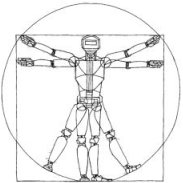Robotics: Science and Systems XVIII
SEER: Unsupervised and sample-efficient environment specialization of image descriptors
Peer Neubert, Stefan SchubertAbstract:
Image descriptor based place recognition is an important means for loop-closure detection in SLAM. The currently best performing image descriptors for this task are trained on large training datasets with the goal to be applicable in many different environments. In particular, they are not optimized for a specific environment, e.g. the city of Oxford. However, we argue that for place recognition, there is always a specific environment - not necessarily geographically defined, but specified by the particular set of descriptors in the database. In this paper, we propose SEER, a simple and efficient algorithm that can learn to create better descriptors for a specific environment from such a potentially very small set of database descriptors. The new descriptors are better in the sense that they will be more suited for image retrieval on these database descriptors. SEER stands for Sparse Exemplar Ensemble Representations. Both sparsity and ensemble representations are necessary components of the proposed approach. This is evaluated on a large variety of standard place recognition datasets where SEER considerably outperforms existing methods. It does not require any label information and is applicable in online place recognition scenarios. Open source code is available.
Bibtex:
@INPROCEEDINGS{Neubert-RSS-22,
AUTHOR = {Peer Neubert AND Stefan Schubert},
TITLE = {{SEER: Unsupervised and sample-efficient environment specialization of image descriptors}},
BOOKTITLE = {Proceedings of Robotics: Science and Systems},
YEAR = {2022},
ADDRESS = {New York City, NY, USA},
MONTH = {June},
DOI = {10.15607/RSS.2022.XVIII.006}
}
